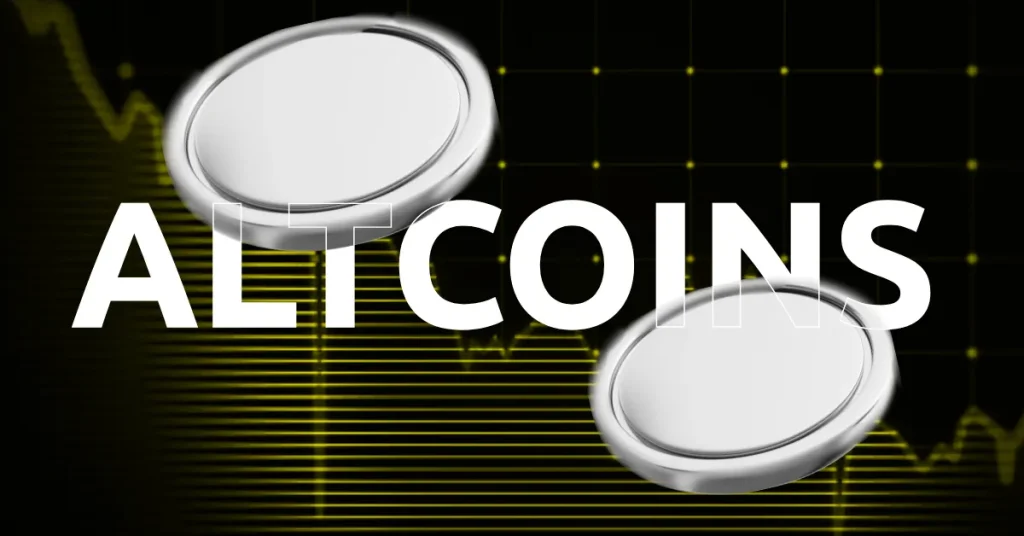BitcoinWorld Bank of Thailand Rate Cut: A Crucial Boost for Thai Exporters and the Economy In the dynamic world of global finance, central bank decisions often send ripples far beyond national borders. The recent move by the Bank of Thailand rate cut its interest rate has become a focal point, particularly for those tracking emerging markets and their influence on the broader economic landscape. This strategic decision, as highlighted by the Finance Minister, aims to provide a significant lift to the nation’s vital export sector, signaling a proactive approach to economic challenges. Understanding the Bank of Thailand’s Strategic Move: Why Now? The decision by the Bank of Thailand to reduce its benchmark interest rate was not made in isolation. It was a calculated response to a confluence of domestic and international economic pressures. For months, the Thai economy has grappled with a sluggish recovery, facing headwinds from global economic slowdowns, geopolitical tensions, and persistent challenges in its key sectors. While inflation has been a concern globally, Thailand has experienced relatively subdued inflationary pressures, providing the central bank with some room for maneuver. The primary motivations behind this significant monetary policy adjustment include: Stimulating Economic Growth: Despite the rebound in tourism, other sectors of the Thai economy have shown signs of weakness. A lower interest rate makes borrowing cheaper for businesses and consumers, encouraging investment and spending, which are crucial for accelerating economic activity. Supporting Export Performance: Thailand is an export-driven economy. A weaker global demand environment has impacted its trade performance. The rate cut is expected to lead to a depreciation of the Baht currency , making Thai goods more competitive in international markets. Addressing Deflationary Risks: While not a widespread issue, some sectors have faced pricing pressures. A rate cut can help prevent a sustained period of falling prices, which can be detrimental to economic health. Aligning with Regional Trends: Some other central banks in the region have also adopted accommodative stances, making it strategic for Thailand to maintain its competitiveness without risking significant capital outflows. The Finance Minister’s endorsement underscores the government’s belief that this measure is a necessary catalyst for economic revival, particularly in bolstering the export engine. How Does a Rate Cut Empower Thai Exporters? The most direct and anticipated benefit of the Bank of Thailand rate cut is for the nation’s exporters. When interest rates are lowered, it typically leads to a depreciation of the local currency. For Thailand, this means the Thai Baht becomes weaker against major trading currencies like the US Dollar, Euro, and Japanese Yen. This depreciation has a profound impact on the competitiveness of Thai products in the global marketplace. Here’s how it empowers Thai exporters : Increased Price Competitiveness: A weaker Baht means that foreign buyers can purchase Thai goods and services at a lower price in their own currency, even if the price in Baht remains the same. This makes Thai exports more attractive compared to those from countries with stronger currencies. Higher Baht Revenues: For exporters selling goods priced in foreign currencies, a weaker Baht translates to more Baht received when converting their foreign earnings. This boosts their profit margins, allowing for reinvestment, expansion, or improved profitability. Stimulated Demand: As Thai products become more affordable, demand from international markets is likely to increase. This can lead to higher export volumes, increased production, and job creation within the export-oriented industries. Support for Key Sectors: Thailand’s export basket is diverse, ranging from agricultural products (rice, rubber, seafood) to industrial goods (electronics, automotive parts) and services (tourism). Each of these sectors stands to benefit from enhanced price competitiveness. For instance, a Thai rice exporter can offer their product at a more appealing price point to international buyers, potentially securing larger contracts. Consider the following simplified example: Item Price in Baht (Pre-Rate Cut) Price in USD (Assuming 35 Baht/USD) Price in Baht (Post-Rate Cut) Price in USD (Assuming 37 Baht/USD) Exporter’s Benefit Thai Rice (1 ton) 17,500 THB $500.00 17,500 THB $472.97 More competitive price in USD, potentially higher sales volume. Electronic Component 350 THB $10.00 350 THB $9.46 Increased appeal to global manufacturers looking for cost-effective components. This table illustrates how the same Baht price for a product translates into a lower foreign currency price after a currency depreciation, directly benefiting exporters by making their goods more attractive on the global stage. Broader Implications for the Thailand Economy: Beyond Exports While the immediate focus of the rate cut is on bolstering Thai exporters , its effects are expected to permeate the entire Thailand economy . The Finance Minister’s statement implicitly acknowledges the interconnectedness of various economic sectors. A stronger export performance can create a positive feedback loop, influencing domestic demand, investment, and employment. The broader implications include: Boost to Tourism: A weaker Baht currency also makes Thailand a more affordable destination for international tourists. This can lead to increased tourist arrivals and higher spending, directly benefiting the hospitality, retail, and service sectors, which are crucial contributors to the Thai GDP. Stimulating Domestic Investment: Lower interest rates reduce the cost of borrowing for businesses planning to expand or invest in new projects. This can lead to increased capital expenditure, job creation, and enhanced productivity across various industries. Encouraging Domestic Consumption: While the primary focus is on exports, cheaper credit can also encourage consumers to take out loans for big-ticket purchases like homes or cars, indirectly boosting domestic consumption. However, the central bank must balance this with concerns about household debt. Government Borrowing Costs: A lower interest rate environment can also reduce the cost of government borrowing, providing more fiscal space for public investments and stimulus packages. Impact on Financial Sector: While lower rates can squeeze bank net interest margins, increased economic activity and loan demand can offset some of these pressures. Banks may also see an improvement in asset quality if businesses and households find it easier to service their debts. The central bank’s aim is to create a more favorable environment for overall economic recovery, leveraging the export sector as a primary driver while also fostering growth in other key areas. Navigating the Nuances of Monetary Policy in Southeast Asia The Bank of Thailand rate cut is a significant move within the broader landscape of Southeast Asian monetary policy . Central banks in the region often face a delicate balancing act, managing inflation, supporting growth, and maintaining financial stability amidst global uncertainties. Thailand’s decision reflects a pragmatic approach to its unique economic circumstances. Key considerations in the region’s monetary policy include: Global Interest Rate Cycles: While major central banks like the U.S. Federal Reserve have signaled a pause or even potential cuts in their rate hikes, regional central banks must weigh their domestic needs against the risk of capital outflows if their rates diverge too sharply. Inflation Dynamics: Each country experiences different inflation pressures. Thailand’s relatively benign inflation environment has given it more flexibility compared to some peers still battling elevated price levels. Exchange Rate Management: Managing the local currency’s strength or weakness is crucial for export-oriented economies. A weaker currency aids exports but can make imports more expensive, potentially fueling inflation. Household and Corporate Debt: High levels of debt can limit the effectiveness of rate cuts, as households and businesses may prioritize debt repayment over new spending or investment. The Bank of Thailand’s move indicates a priority on growth and export competitiveness, positioning it somewhat differently from central banks that may still be focused on containing inflation through tighter policies. This divergence can create opportunities for investors looking for specific economic exposures. What Does This Mean for the Baht Currency? A critical aspect of any interest rate decision is its immediate and long-term effect on the national Baht currency . Typically, a rate cut makes a country’s assets less attractive to foreign investors seeking higher returns, leading to capital outflows and a depreciation of the currency. This is precisely what the Finance Minister and the central bank hope for to boost exports. The implications for the Baht include: Initial Depreciation: Markets often react swiftly to rate cuts, leading to an initial weakening of the Baht against major currencies. This is a direct mechanism through which export competitiveness is enhanced. Volatility: Currency markets can be volatile, especially in response to significant policy shifts. Traders and investors will closely monitor the Baht’s movement, looking for signs of stability or further depreciation. Impact on Imports: While good for exports, a weaker Baht makes imports more expensive. This can affect businesses reliant on imported raw materials or components, potentially increasing their operational costs. Consumers might also face higher prices for imported goods. Inflationary Pressure: Over the longer term, a significantly weaker Baht can contribute to imported inflation, as the cost of foreign goods and services rises. The Bank of Thailand will need to carefully monitor this potential side effect. Tourism Competitiveness: As mentioned, a weaker Baht makes Thailand a more attractive and affordable destination for international tourists, further supporting the tourism sector’s recovery. The central bank will likely manage the Baht’s depreciation carefully, aiming for a level that supports exports without triggering excessive inflation or capital flight. The stability of the Baht will also depend on other factors such as global economic sentiment, commodity prices, and the performance of Thailand’s key trading partners. Potential Challenges and Risks Ahead While the Bank of Thailand rate cut is seen as a positive step for Thai exporters and the overall Thailand economy , no policy comes without its potential challenges and risks. The central bank and the government will need to navigate these carefully to ensure the desired outcomes are achieved without unintended consequences. Key challenges include: Household Debt: Thailand has a relatively high level of household debt. While lower interest rates might ease the burden for some borrowers, they could also encourage further borrowing, potentially exacerbating the issue if not managed prudently. Inflationary Pressures: Although inflation is currently subdued, a significantly weaker Baht currency could lead to imported inflation, raising the cost of living and potentially eroding purchasing power for consumers. The central bank must remain vigilant. Capital Outflows: If the interest rate differential between Thailand and major economies widens significantly, it could trigger capital outflows as investors seek higher returns elsewhere. This could put further downward pressure on the Baht and potentially impact financial stability. Impact on Banks’ Profitability: Lower interest rates can compress banks’ net interest margins, potentially impacting their profitability. While increased lending volumes could offset this, a prolonged low-rate environment could pose challenges for the financial sector. Effectiveness of Transmission Mechanism: The success of the rate cut depends on how effectively it transmits through the financial system to businesses and consumers. If banks are reluctant to lend or if demand remains weak, the impact might be less pronounced than desired. Global Economic Volatility: The benefits of a weaker Baht for exports can be negated if global demand remains persistently weak due to ongoing geopolitical tensions, supply chain disruptions, or economic slowdowns in key trading partners. The Bank of Thailand’s monetary policy committee will need to continuously assess these risks and be prepared to adjust its stance if economic conditions warrant it. Actionable Insights for Businesses and Investors For businesses operating in or with Thailand, and for investors eyeing opportunities in Southeast Asia, the Bank of Thailand rate cut presents several actionable insights: For Exporters: Reassess pricing strategies to leverage the weaker Baht currency . Explore new markets or expand existing ones, as Thai goods are now more competitive. Consider hedging strategies to manage currency volatility and lock in favorable exchange rates. For Importers: Be mindful of rising import costs. Explore alternative sourcing options, negotiate favorable terms with suppliers, or consider forward contracts to mitigate currency risk. For Investors in Thai Equities: Look for export-oriented companies that stand to benefit from increased competitiveness and higher revenues. Sectors like electronics, automotive, agriculture, and tourism-related businesses could see improved performance. For Bond Investors: A rate cut typically leads to lower bond yields. Investors might see some short-term capital losses on existing bonds but could find opportunities in longer-duration bonds if the central bank signals a prolonged low-rate environment. For Forex Traders: Monitor the Baht’s movement closely. While the initial reaction might be depreciation, its long-term trajectory will depend on the overall health of the Thailand economy , global capital flows, and future monetary policy decisions. For Domestic Businesses: Consider taking advantage of lower borrowing costs for expansion, modernization, or inventory management. Increased domestic consumption driven by a stronger economy could also present opportunities. Understanding these dynamics is crucial for making informed decisions in a changing economic landscape. Conclusion: A Calculated Step Towards Economic Resilience The Bank of Thailand rate cut is a bold and calculated move by the central bank, strongly supported by the Finance Minister, to inject momentum into the nation’s economic recovery. Its primary objective is clear: to empower Thai exporters and make their products more competitive on the global stage, thereby stimulating trade and boosting the overall Thailand economy . This strategic adjustment in monetary policy reflects a proactive stance to navigate global headwinds and foster domestic growth. While the immediate benefits for the export sector and the tourism industry are anticipated, the central bank will need to carefully monitor the implications for the Baht currency , potential inflationary pressures, and the broader financial stability. The success of this policy will ultimately depend on its ability to translate into tangible growth across various sectors, leading to increased investment, consumption, and job creation. It’s a clear signal that Thailand is committed to leveraging all available tools to ensure its economic resilience and prosperity in an ever-evolving global market. To learn more about the latest Forex market trends, explore our article on key developments shaping interest rates liquidity. This post Bank of Thailand Rate Cut: A Crucial Boost for Thai Exporters and the Economy first appeared on BitcoinWorld and is written by Editorial Team














